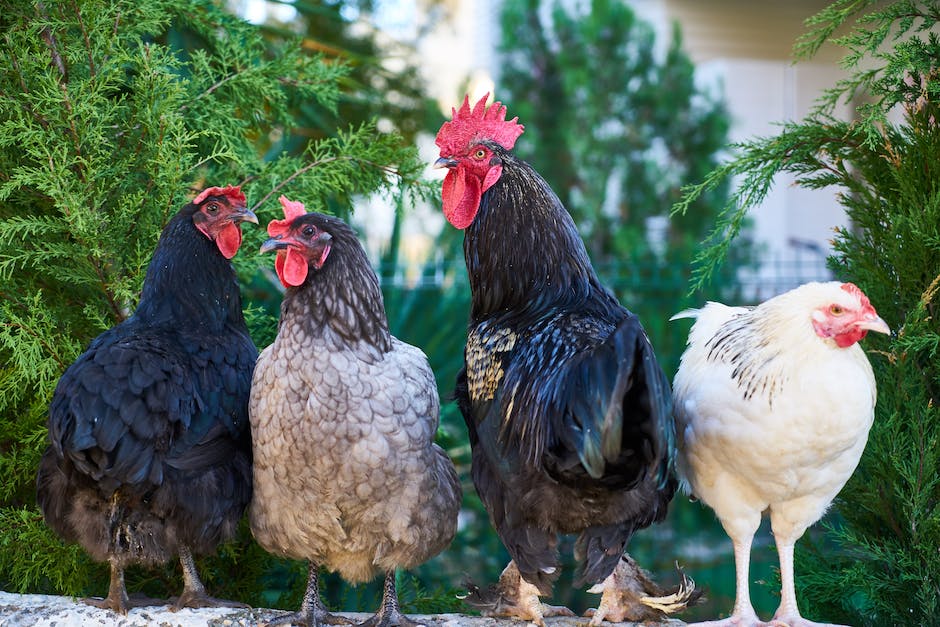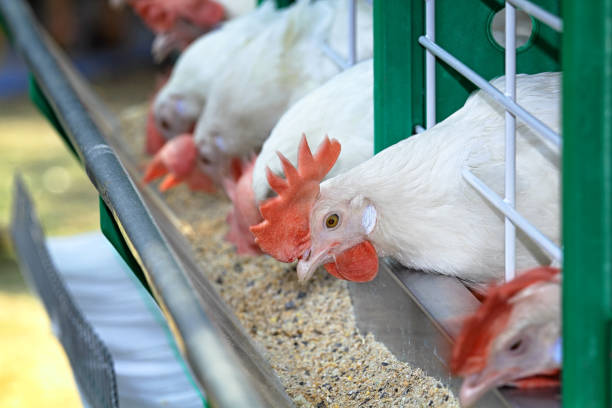Welcome to our comprehensive guide on raising chickens for meat, this can be an exciting rewarding journey towards self-sufficiency and sustainable living. In today’s world, more and more individuals are embracing the idea of becoming self-reliant by producing their own food, and one of the most fulfilling ways to do so is by raising chickens for meat.
However, embarking on this adventure requires a solid understanding of the process to ensure you end up with high-quality, healthy poultry. In this guide, we’ll take you through the essential steps to get started on your chicken farming journey. From selecting the right meat chicken breeds and understanding their growth patterns to mastering chicken care and health management techniques, we’ve got you covered. Additionally, we’ll delve into the humane and sanitary aspects of poultry processing and butchery, ensuring that you can enjoy the fruits of your labor in the most ethical and healthy way possible.
Let’s begin your chicken-raising adventure and learn how to provide your family with delicious, homegrown meat while promoting self-sufficiency and sustainability.
We will receive a commission if you purchase through our affiliate link at no extra cost to you. Please read our disclosure policy for more information.
Meat Chicken Breeds
Raising Champions: The Best Chicken Breeds for High Quality Meat
When it comes to raising chickens for meat, it’s important to understand that not all chicken breeds are created equal. Some possess qualities that make them ideal for meat production, including exceptional growth rates and superior meat quality. Whether you’re a novice starting your backyard flock or a seasoned chicken enthusiast, knowing which chicken breeds excel in meat production can set you on a path to raising tender, delectable chicken within a remarkably short time.
In the great chicken meat debate, three breeds consistently steal the limelight: the Cornish Cross, Freedom Rangers, and Jersey Giants. These breeds have their own unique attributes that make them stand out in the world of meat chickens.
Cornish Cross: The Speedy Grower
Synonymous with commercial meat production, the Cornish Cross is the unrivaled champion of fast growth. These birds boast an extraordinary growth rate, reaching market weight, typically around 6-7 pounds, in just 6-8 weeks. This remarkable speed is an economic advantage for those rearing chickens on a large scale. It means a quicker turnover and less feed consumed over the lifetime of the bird.
Moreover, the meat from Cornish Cross chickens is exceptionally tender, making it a top choice for gourmet chefs and home-cooks alike. However, it’s worth noting that due to their rapid growth, Cornish Cross chickens often suffer from health issues and require more attention than other breeds.
Freedom Rangers: The Versatile Foragers
Versatility is the name of the game for Freedom Rangers. If you’re planning to free-range your flock, these birds might be your perfect match. They are terrific foragers, which can make them cost-effective as they can supplement their diet with insects and vegetation. While they take slightly longer to reach market weight compared to Cornish Cross, usually around 9-11 weeks, the wait can be well worth it. Their meat is often described as richly-flavored and succulent, appealing to those who seek a more classic chicken taste.
Jersey Giants: The Gentle Giants
And then, there are the gentle giants, the Jersey Giants. They are relatively slow growers compared to the two previously mentioned breeds, reaching market weight in about 16-21 weeks. However, what they lack in speed, they make up for in size. Jersey Giants are well-acclaimed for their sizeable carcasses, which can reach a whopping 13 pounds for roosters and 10 pounds for hens. Their meat is considered to be of high quality, although the flavor is often described as more gamey than other breeds.
Each of these three chicken breeds has distinct characteristics that align with different rearing techniques and final meat qualities. Choose the Cornish Cross for speedy growth and tender meat, Freedom Rangers for homesteading and delicious flavor, and Jersey Giants for large meat yields. Regardless of your choice, nurturing these birds in a healthy, stress-free environment is the secret sauce to rearing the most delectable, meaty champions of your backyard flock. So, set up your coop, sharpen your chicken rearing skills, and savor the fruits (or, in this case, meats) of your labor!

Caring for Meat Chickens: Guide to Raising Chickens for Meat
Chickens may not be the first thing that comes to mind when you think of backyard heroes, but they have a lot to offer. Raising meat chickens can be quite straightforward once you understand their basic needs. There are various chicken breeds out there, but you’ve already been introduced to the Cornish Cross, Freedom Rangers, and Jersey Giants. Now, let’s talk about how to take care of these champion birds to get the best meat on your plate.
-
Keeping Chicks Warm and Cozy: When you first bring home your chicks, it’s crucial to provide them with a warm, draft-free environment. Chicks can’t regulate their body temperature, so you’ll need a brooder or a makeshift space that maintains a temperature of 90-95°F for the first week. Gradually reduce the temperature by five degrees each week until they are comfortable at room temperature, which usually takes about six weeks.
-
Feeding and Hydration: Meat chickens love to eat, but it’s essential to provide them with a balanced diet. Start with high-protein starter crumbs (around 18% protein) for the first five weeks, and then switch to less protein-rich finisher pellets. Be careful not to overfeed, as it can lead to rapid growth issues. Additionally, change their water daily to keep them healthy and prevent diseases.
-
Housing Matters: Proper housing is crucial for the well-being of your meat chickens. While they may not have a lot of room to roam, they still need sufficient space. Aim for 2-3 square feet per bird inside the coop and 4-5 square feet in an outdoor run. This helps reduce conflicts among these sizable birds. A clean, well-ventilated, and predator-proof coop is a must.
-
Monitoring Health: Regularly check on your chickens for any signs of illness, such as lethargy, unusual behavior, or decreased appetite. Recognizing problems early can prevent serious health issues like parasitic infestations, respiratory illnesses, or bacterial infections.
-
Processing Your Chickens: The moment of truth comes when it’s time to process your meat chickens. This should ideally happen when they reach market weight, which is around 8-9 weeks for the Cornish Cross. For Freedom Rangers and Jersey Giants, it might take up to 16 weeks or more. You can either have a local butcher handle the processing or learn to do it yourself following humane guidelines.
Raising meat chickens is a labor of love, and the rewards go beyond the delicious meat. It offers a sense of accomplishment and a deeper connection to your food. As these backyard dynamos grow, you’ll find the journey enchanting, enriching both your table and your soul.
Remember, success in raising meat chickens depends on your dedication and the care you put into this craft. The result is exceptionally flavorful meat that outshines anything you can buy at the store. With these strategies in place, you’re well-prepared to start your adventure with meat chickens, turning your backyard into a haven of wholesome, homegrown food. The chicken enthusiast within you is ready to shine!

Processing and Butchery
Processing and Butchering Chickens: A Step by Step Guide
Turning a live chicken into delicious meat right in your own backyard may sound daunting, but with the right tools and know-how, it can be a satisfying and streamlined process. We’ll walk you through the steps to help you get started with processing and butchering chickens.
1. Choose the Right Chicken:
- Select a chicken that has had enough time to grow and mature, typically around 8-12 weeks. Younger chickens are generally more tender and easier to handle during the processing.
2. Humanely Prepare for Slaughter:
- Use a cone or a similar device to hold the chicken securely upside down. This position calms the chicken and minimizes any distress it might experience. Humane slaughtering is important not only for ethical reasons but also to ensure meat quality.
- The restraining cone helps restrain birds during processing and makes clean up easy, be sure to get the right size cone for your bird, as your bird will flap around and if your cone is to small your bird may work its way out of the cone.
For more information on restraining cones Click Here
3. Make a Swift Cut:
-
- Use a sharp knife to quickly and cleanly cut through the major blood vessels in the neck. This swift cut ensures a humane and quick end to the chicken’s life. Have a container ready to catch the draining blood. Proper blood drainage is essential for maintaining meat quality.
4. Scald the Chicken:
- After the chicken has been bled out, it’s time to scald it. Scalding involves immersing the entire chicken in hot water for about a minute. The water temperature should be around 150°F, not boiling. Scalding helps loosen the feathers and makes them easier to pluck in the next step.
- If you have a large pot that will work, otherwise a portable propane outdoor cooker with an adjustable regulator so you are able to control the temperature will work well, for more information on this cooker Click Here
5. Pluck the Feathers:
- Once scalded, begin the process of plucking the feathers. It’s best to do this while the bird is still warm. Start by removing the larger wing and tail feathers, and then work your way around the rest of the body. Pay attention to areas where feathers might be harder to remove.
- You also have the option of using a more automated method of feather removal with the Chicken Plucker Machine, this consist of a motorized stainless drum with a rotating center section with over 100 rubber fingers. This plucker is designed to quickly de-feather chickens in just 10-30 seconds and can handle 2-4 chickens at a time. For more information Click Here
6. Eviscerate the Chicken:
- Evisceration is the process of removing the internal organs. Here’s a more detailed breakdown:
- Make a shallow cut at the base of the neck to remove the crop (a pouch for storing food), trachea (windpipe), and esophagus (food tube).
- Loosen the crop and attached organs from the front of the bird.
- Continue the cut down to the rear end of the bird, making a shallow cut around the vent (the opening for waste elimination) without piercing the intestines.
- Reach inside the body cavity, gripping everything, and draw it out in one sweep. This includes the intestines, heart, liver, and other internal organs.
- Some tools to help with your process of removing the internal organs and cutting bone.
Stainless Steel Poultry Shears For Bone
7. Clean and Cool:
- With the chicken now cleaned both inside and out, it’s essential to cool it down quickly. The goal is to lower the temperature to about 40°F as soon as possible. You can do this by placing the chicken in a sealed bag in the refrigerator for a few hours. Cooling helps set the meat and makes it ready for freezing or further preparation.
Processing and butchering chickens can be a meticulous process, but with practice and care, it becomes more manageable. Remember, each time you do it, you’ll gain more experience and confidence in the process. Enjoy the journey of learning and take pride in the delicious meals you can create from chickens you’ve processed yourself.
Transforming a live chicken into quality meat takes care, hygiene, and precision, but it’s a rewarding experience for hobbyists. Enjoy the journey!

Raising chickens for meat can be an incredibly satisfying and beneficial experience, offering you a source of healthy, homegrown food while promoting ethical and sustainable living. The rewards go beyond just choosing the right chicken breeds – they come from taking good care of your chickens, managing them well, and following proper processing practices. By learning and applying knowledge in these important areas, you can look forward to a fulfilling journey where you not only provide your family with nutritious poultry but also contribute to a lifestyle that values animal welfare, supports self-sufficiency, and encourages sustainable practices for future generations.









